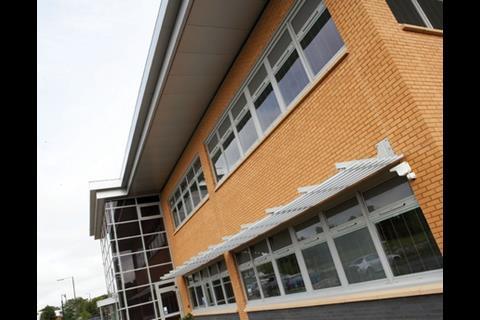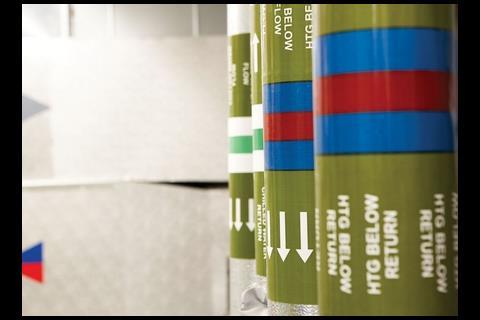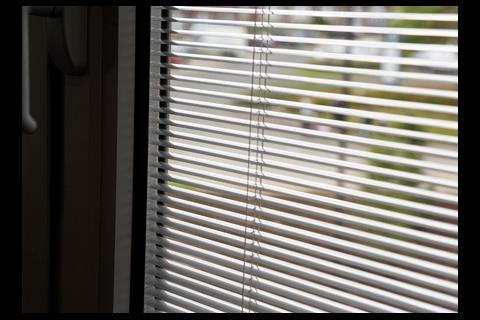When M&E specialist NG Bailey set out to build its new headquarters in Strathclyde, it wanted to show what it could do to a standard spec office. Its control over the project enabled it to bring in a building of the finest green credentials
‘Get us in early and you will get a much better building,” is the standard refrain of most specialist contractors. The grumble is that specialists only get involved with projects when it’s too late: the design is set in stone, and all the practical knowledge of what works and what doesn’t, and the best way of putting it together, is ignored. The client ends up with an expensive building, delivered late, and which doesn’t work properly.
So what happens when you give specialists the chance to get involved at the beginning and let them control the design, what products are used and how these are installed? Ask M&E specialist NG Bailey, who did just this on its newly opened Scottish regional headquarters on a business park outside Glasgow. It wanted to rationalise several smaller offices into one, plus it wanted a low-energy building that showed off its skills to potential clients.
“We took the view that we ought to put our money where our mouth is in terms of our corporate sustainability agenda. And we wanted to show customers what we can do by taking this building to the next level to reduce energy use and create a more sustainable building,” explains Mark Andrew, chief executive.
So is Andrew enjoying a better and greener building because NG Bailey controlled the design and delivery of the project? Well, it doesn’t look particularly special. Indeed, it looks similar to all the other buildings on Strathclyde business park – two storeys of brickwork, broken up by two rows of identical windows, and a glazed area in the middle to add some visual interest and provide a more impressive entrance.
The planners weren’t keen on a deep green eco job; the company wanted an ordinary building. “We wanted to take a developer’s standard specification and up its performance,” says Andrew. “There’s value in that, as it shows what the industry can do with a standard, speculative development.”
The target set by Andrew was an environmental assessment method BREEAM rating of Excellent and an “A” energy performance certificate rating. The budget was £5.5m – £850,000 more than a bog-standard equivalent. The end result was a naturally ventilated building with a ground-source heat pump, borehole cooling for areas that couldn’t be entirely naturally cooled, low-energy lighting, rainwater harvesting, solar thermal panels for hot water, and an atrium with thin cell photovoltaics sandwiched between the glass.
It’s a menu that appears attached to many low-energy buildings. The difference is the way in which NG Bailey has gone about designing and delivering this project. Paul Hancock, the firm’s divisional technical director, says the firm started from first principles, which included ensuring employees would be comfortable and therefore more productive, which was important to it as the end user. It also researched energy use carefully, even looking at how much energy its office printers were using because it pays the bills for everything.
As NG Bailey was in the driving seat, it could dispense with architectural fripperies that could compromise the energy-saving design. “Function needs to be more important than aesthetics,” says Andrew – words that would horrify most architects. “The M&E contractor needs to be involved upfront to get the functionality right.” An example of this is the glazing panels of the entrance atrium – they are all exactly the same size. Architects may dismiss this as monotonous, but as it means all the PV panels were the same size, only one type of inverter – the device that converts direct into alternating current – is needed.
This practical design philosophy was also applied to the windows, which were a key part of the natural ventilation strategy. Each window features a mechanically controlled high-level opening light to let cool air into the building. The main part of the window is a tilt turn design that can be opened manually by users. “If people can control their environment they are happy – being hot or cold becomes less of an issue,” says Hancock.
But how to control glare when the window is open? The answer is a Venetian blind sandwiched between the double-glazing panes, which works even when the window is tilted open. The firm has even thought about the impact of the blind rubbing on the special coating that reduces heat loss through the glass. Low-emissivity coatings are normally very soft, so NG Bailey specified a hard coating that the blind would not damage.
The other part of NG Bailey’s energy-saving strategy is a sophisticated building management system. “I always find the control system has by far the biggest cost benefit,” says Cal Bailey, sustainability director. This integrates all the different systems in the building, such as the fire alarms, ventilation systems and ICT, over one network, so everything works as efficiently as possible. For example, employees are issued with one smart card that controls access, enables them to make cashless purchases from vending machines and controls printers. This means senior staff can print out secure documents with their cards, which eliminates the need for a private printer. This has enabled the firm to cut back on the number of printers needed, so these only use 6kW of electricity rather than a previous 16kW.
Function needs to be more important than aesthetics
Mark Andrew, Chief Executive
If an employee wants to close the opening light in the window, this can be done via the telephone system, although it will open automatically again after 30 minutes.
According to Cal Bailey, getting control systems with different communication protocols to integrate with each other is difficult. “Protocol interfacing done poorly is the source of many building problems,” he says. “Bailey Maintenance finds as many BMS systems switched off as switched on.” The company has even found this challenging on its own projects; it had problems when it tried to integrate the control systems when building its Reading office two years ago. “At Reading there were conflicts so a handful of lights didn’t work, which all happened to be in the MD’s office,” says Hancock. However, the firm learned valuable lessons from this experience and, combined with careful laboratory testing, this meant the systems in the Strathclyde building function as designed.
Underpinning the sophisticated M&E is a building that has been well put together. It is built from traditional masonry, featuring a layer of internal plaster on the inner blockwork face to improve airtightness. The sealed drylining forms a secondary airtight barrier, and the windows and junctions have been carefully sealed to give an airtightness test result of just 2.91m3/hr/m2.
Elsewhere Hancock has been driving down energy use. “You’ll have gathered by now that I am pretty miserly when it comes to energy use,” he laughs. “By cutting those little slivers off, you build up the building’s performance.” The server room is a potential big energy user and when Hancock monitored another NG Bailey office he found the designed energy load was assumed to be 6kW. This had been fitted with a cooling system, plus backup to cope with this level of heat production.
Hancock found the room was actually using 3kW, meaning the cooling system was massively oversized and therefore inefficient. At Strathclyde he took out unnecessary equipment, such as a display screen, plus farmed some capacity out to a data centre, which drove energy use down to 1.4kW.
Not yet satisfied, Hancock used a phase change material in the walls to improve the thermal mass of the server room. This has sufficient capacity to keep the room cool over a weekend. This means the pumps used to circulate the borehole water that cools the reception area and meeting rooms can remain switched off at weekends. Hancock has also incorporated a phase change material into the ceiling of the meeting rooms to delay the need to switch on the cooling system when the rooms are occupied.
So how well does the building perform? The BREEAM rating is 79% and the building has got it’s A-rated EPC coming in at just 13kg/m2 per annum, which compares favourably with a standard spec office that would have an energy use of 41kg/m2 per annum.
Andrew describes his decision to go ahead with this building three years ago as “a leap of faith” because of the extra costs, but feels vindicated. Not only has he got a handy demonstration project, but steep energy prices mean he will save money on running costs, which, in today’s economic climate, is no bad thing.
The extra costs that make this building low energy
Reducting the need for energy: £250,500
- Window-opening panes £100,000
- Interstitial blinds £50,000
- Opening roof lights £46,000
- Curtain walling opening panes £30,000
- Lighting control £10,000
- Wind catchers £5,000
- Sun pipes £5,000
- Low-level opening lights in curtain walling £2,000
- Sub-metering £2,500
Generating energy: £286,000
- Ground source heat system £145,000
- Micro-hydro scheme £50,000 (not yet installed)
- Photovoltaic glass £76,000
- Solar thermal £15,000
Reducing water use: £29,500
- Rainwater harvesting £29,500
Alternative transport features: £29,500
- Cycle shelter £12,000
- Lockers £7,100
- Video conferencing £9,000
Other sustainability measures: £62,312
- Metal ceiling tile (extra over) £23,000
- Ambient noise reduction £10,000
- Screen print to upper panes £4,219
- Major leak detection £1,000
- Recycling storage £2,000
- Ecologist fee £2,513
- BREEAM prelims £2,500
- BREEAM fee £11,830
- Acoustician fee £5,250
Note: These are net figures. NG Bailey calculated the gross cost, which includes design fees and contractor’s profit, to be £850,000
Postscript
This building is one of six shortlisted for Sustainable Large Project of the Year at ��ɫ����TV’s Sustainability Awards. The winner will be announced on 18 November at the London Hilton hotel. To book, go to
For more sustainability case studies, see



































No comments yet